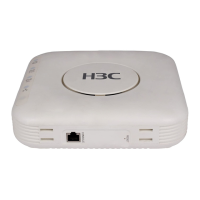391
WMM protocol overview
The distributed coordination function (DCF) in 802.11 stipulates that access points (APs) and clients use
the CSMA/CA access mechanism. APs or clients listen to the channel before they hold the channel for
data transmission. When the specified idle duration of the channel times out, APs or clients randomly
select a backoff slot within the contention window to perform backoff. The device that finishes backoff first
gets the channel. With 802.11, all devices have the same idle duration and contention window. They are
equal when contending for a channel. In WMM, this fair contention mechanism is changed.
EDCA parameters
WMM assigns data packets to four access categories. By allowing a high-priority access category to
have more channel contention opportunities than a low-priority access category, WMM offers different
service levels to access categories.
WMM defines a set of EDCA parameters for each access category, covering the following:
• Arbitration inter-frame spacing number (AIFSN)—Different from the 802.11 protocol where the idle
duration (set using DIFS) is a constant value, WMM can define an idle duration per access category.
The idle duration increases as the AIFSN value increases (see Figure 415 f
or the AIFS durations).
• Exponent form of CWmin (ECWmin) and exponent form of CWmax (ECWmax)—Determine the
average backoff slots, which increases as the two values increase (see Figure 415
for the backoff
slots).
• Transmission opportunity limit (TXOPLimit)—The maximum time for which a user can hold a
channel after a successful contention. The greater the TXOPLimit is, the longer the user can hold the
channel. The value 0 indicates that the user can send only one packet each time it holds the
channel.
Figure 415 Per-AC channel contention parameters in WMM
CAC admission policies
CAC requires that a client obtain permission of the AP before it can use a high-priority access category
for transmission, and guarantees bandwidth to the clients that have gained access. CAC controls real
time traffic (AC-VO and AC-VI traffic) but not common data traffic (AC-BE and AC-BK traffic).

